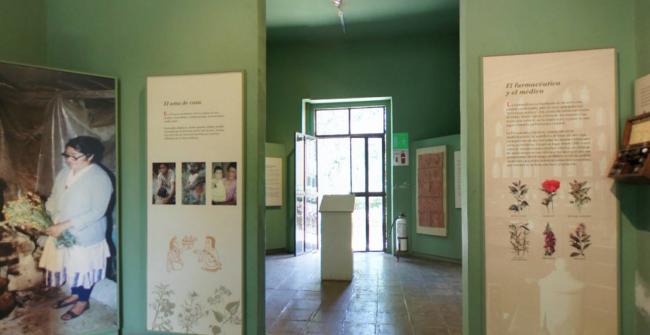
Medicine as a Sociocultural Response to Illness
Sala
Today, there are many forms of alternative medicine that people turn to for different health issues. The first is self-care or household medicine, which involves using home remedies to treat ailments within the family—often led by the homemaker, who takes on the responsibility of family well-being. Other alternative practices on display include naturism, homeopathy, spiritualism, and biomedicine. Catholic faith plays a central role in many treatments; patients may pray to El Niño de la Salud or the Divine Child Doctor, crossing themselves before the image and asking from the heart to be healed.
Three-sided interactive displays provide information on common folk illnesses such as "mal de ojo" (evil eye), "caída de mollera" (sunken fontanelle), "susto" or "espanto" (fright), and ailments caused by "aires" (harmful winds). The exhibit also presents diagnostic and healing practices used by traditional healers, including "limpias" (spiritual cleansings), medicinal herbs, and divination with corn kernels. Illnesses with pre-Hispanic origins—like "tlazol", "caxan", or "chincual"—are discussed alongside others like "alferecía" (a type of convulsion) and "vergüenza" (shame). The section concludes with a recreation of a ritual altar used in Morelos after a person's death to “raise the shadow,” reflecting Nahua beliefs about death.


